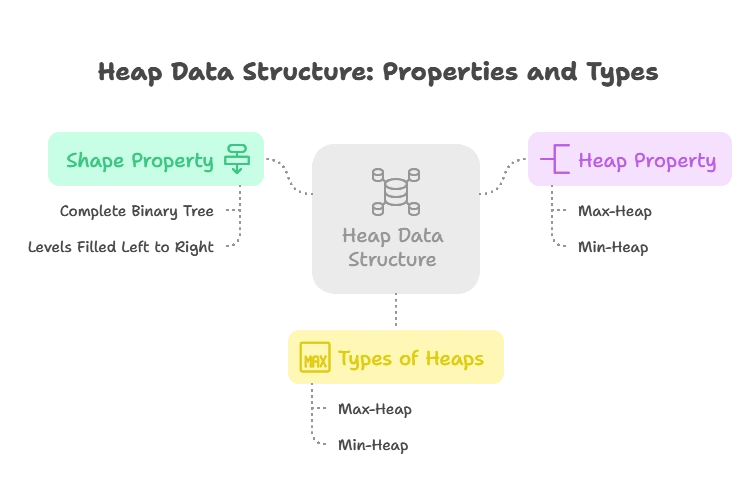Heap
In computer science, a heap is a specialized tree-based data structure that satisfies the heap property. Heaps are commonly used to implement priority queues and are essential in algorithms such as heap sort. In this chapter, we will delve deep into understanding heaps, particularly in the context of the Go programming language.
Basics of Heap Data Structure
What is a Heap?
A heap is a binary tree with two main properties:
- Shape Property: It is a complete binary tree, meaning all levels of the tree are fully filled except possibly for the last level, which is filled from left to right.
- Heap Property: For a max-heap, every parent node must be greater than or equal to its children. For a min-heap, every parent node must be less than or equal to its children.
Types of Heaps
There are two main types of heaps:
- Max-Heap: The value of each parent node is greater than or equal to the values of its children nodes.
- Min-Heap: The value of each parent node is less than or equal to the values of its children nodes.

Implementation of Heap in Go
What is a Heap?
A heap is a binary tree with two main properties:
- Shape Property: It is a complete binary tree, meaning all levels of the tree are fully filled except possibly for the last level, which is filled from left to right.
- Heap Property: For a max-heap, every parent node must be greater than or equal to its children. For a min-heap, every parent node must be less than or equal to its children.
Types of Heaps
There are two main types of heaps:
- Max-Heap: The value of each parent node is greater than or equal to the values of its children nodes.
- Min-Heap: The value of each parent node is less than or equal to the values of its children nodes.
Implementation of Heap in Go
Using Standard Libraries
Go provides a container/heap package in its standard library, which allows us to implement heap data structures easily.
package main
import (
"container/heap"
"fmt"
)
// Example of a min-heap
type IntHeap []int
func (h IntHeap) Len() int { return len(h) }
func (h IntHeap) Less(i, j int) bool { return h[i] < h[j] }
func (h IntHeap) Swap(i, j int) { h[i], h[j] = h[j], h[i] }
func (h *IntHeap) Push(x interface{}) {
*h = append(*h, x.(int))
}
func (h *IntHeap) Pop() interface{} {
old := *h
n := len(old)
x := old[n-1]
*h = old[0 : n-1]
return x
}
func main() {
h := &IntHeap{2, 1, 5}
heap.Init(h)
heap.Push(h, 3)
fmt.Printf("Minimum: %d\n", (*h)[0])
for h.Len() > 0 {
fmt.Printf("%d ", heap.Pop(h))
}
}
- We define a type
IntHeapwhich implements theheap.Interface. - Functions like
Len(),Less(),Swap(),Push(), andPop()are defined to satisfy the heap interface. - We initialize the heap using
heap.Init(h)and add elements usingheap.Push(h, value).- The minimum element can be accessed directly as
(*h)[0].
- The minimum element can be accessed directly as
In conclusion, heaps are an essential data structure that enables efficient priority management through their unique properties. With their binary tree structure, they ensure quick access to the smallest or largest element, making them invaluable for operations like priority queues, heapsort, and graph algorithms. By mastering heaps, developers can optimize problem-solving in scenarios requiring dynamic ordering and efficient retrieval. Happy coding !❤️
